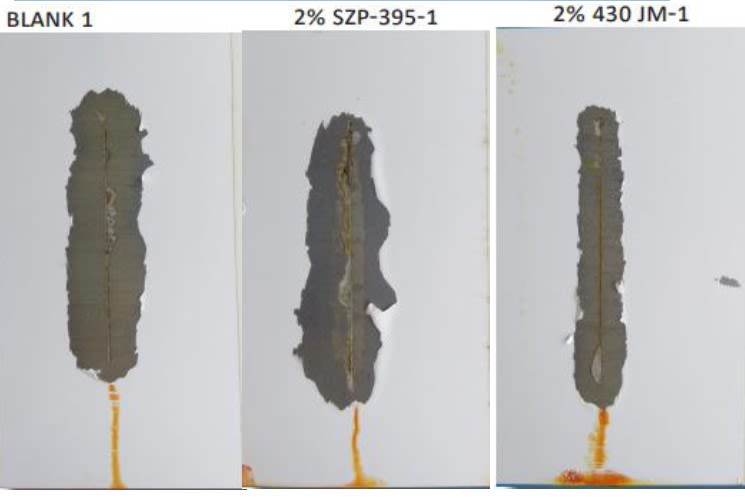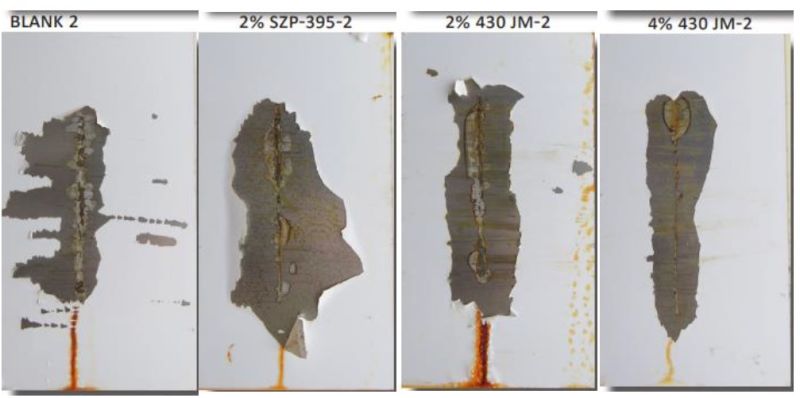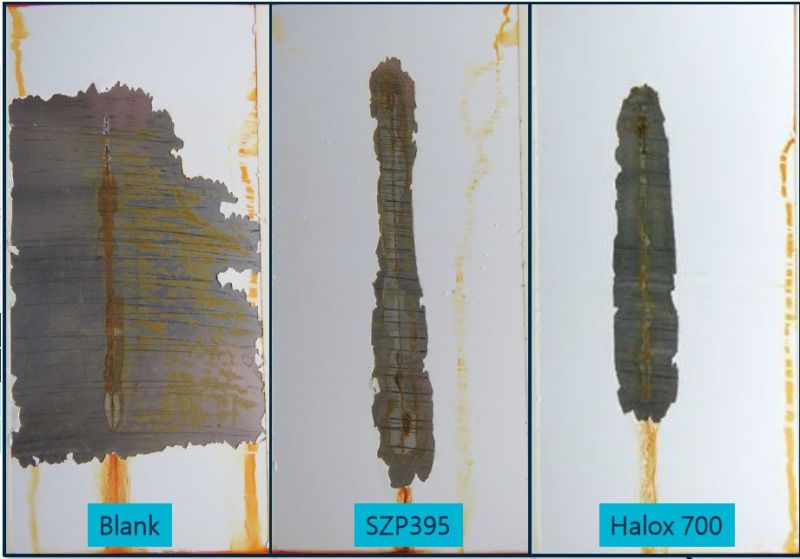Knowde Enhanced TDS
Identification & Functionality
- CASE Ingredients Functions
- Technologies
- Product Families
- Chemical Description
Strontium Zinc Phosphosilicate
Features & Benefits
- Labeling Claims
- CASE Ingredients Features
Applications & Uses
- Applications
- Compatible Polymers & Resins
- Compatible Substrates & Surfaces
- Recommended Loading Levels
- Recommended loading levels range from 2-5% based on total formula weight in many water based systems.
- Recommended loading levels range from 3-7% based on total formula weight in traditional solvent based coatings.
- Applications
- Epoxies
- Latex
- Alkyds (high solids and traditional)
- PVDC
- Catalyzed Baking Systems
- High Acid Value Resins
- WR Alkyds
- Water reducible alkyds
- Vinylidene chloride latexes.
- The fine particle size and low oil absorption of HALOX® SZP-395 makes it the pigment of choice in thin film applications (<1 mil or 25 microns).
Properties
- Appearance
- White Powder
- Typical Properties
| Value | Units | Test Method / Conditions | |
| Density | 3.3 | g/ml | — |
| Hegman Grind | 5.5 | — | — |
| Mean Particle Size | 4.2 | microns | — |
| Moisture Content | 1.5 | % | — |
| Oil Absorption | 34 | lbs/100 lbs | — |
| pH (10% Solution by Weight) | 7.2 | — | — |
| Solubility in Water | 0.02 | % | — |
Regulatory & Compliance
- Certifications & Compliance
Technical Details & Test Data
- HALOX® 430 JM versus Zinc Containing Cl, SZP 395
Water based Light Industrial PU DTM with 2% CI on TFW
Panel Data
B1000 Gloss Scribe Creep ASTM D
1654ID Cross
Hatch
Adhesion20° 60° 85° Scribe Creep
(mm)
AVG of 2
panelsB1000
% Improvement
vs CTLAVG of 2 panels Blank 3B 37.4 76.2 96.4 10 CTL 2% SZP395 3B 29.5 72.6 95.6 11.75 85% 2% 430 4B 28.2 71.4 96.7 5.5 182% ASTM B117, 144 hours, DFT @50 microns, B1000

Water based Light Industrial PU DTM with 2 4% CI on TFW
Panel Data
CRS Gloss 144 hours ID Cross
Hatch
Adhesion20° 60° 85° Scribe Creep
(mm)
AVG of 2
panels%
Improvement
vs CTLAVG of 2 panels Blank 0B 39 76 95.7 19.75 -- 2% 395 0B 30.3 72.3 97 19 104% 2%
430JM2B 27.9 70.2 96.4 11.5 172% 4%
430JM2B 22 66.7 95.3 9.875 200% ASTM B117, 144 hours, DFT @50 microns, CRS

- Heavy Metal Free versus Zinc
Water based Light Industrial DTM Epoxy ASTM B117 @ 168 hours over CRS
CRS 168 Hours Sample Panel # DFT Scribe
Creep
ASTM
D 1654Field
Corrosion
D 610Field
Blistering
ASTM D
714Scribe Creep
(mm) AVG of
2 panelsImprovement
vs CTLBlank 1 4.66 5 10 10 26.375 2 4.68 4 10 10 SZP395 1 4.34 5 10 10 6 440% 2 4.4 6 10 10 700 1 4.58 8 10 10 6.9375 380% 2 4.63 8 10 10 5% loading level

- Factors to Consider while Creating Coatings Solutions
- Combine the inhibitors utilize synergy of multiple mechanisms to achieve desired performance.
- Inorganic/Flash Rust
- Inorganic/Inorganic
- Inorganic/Organic
- Optimize Solubility of the inhibitor. Synergize short term and long term corrosion inhibitors based on their solubility.
- Inhibitor Concentration avoid direct weight to weight replacements. Beneficial to optimize usage level.
- Substrate specific corrosion inhibitor selection can be substrate dependent.
- Combine the inhibitors utilize synergy of multiple mechanisms to achieve desired performance.
Storage & Handling
- Shelf Life
- 36 Months

